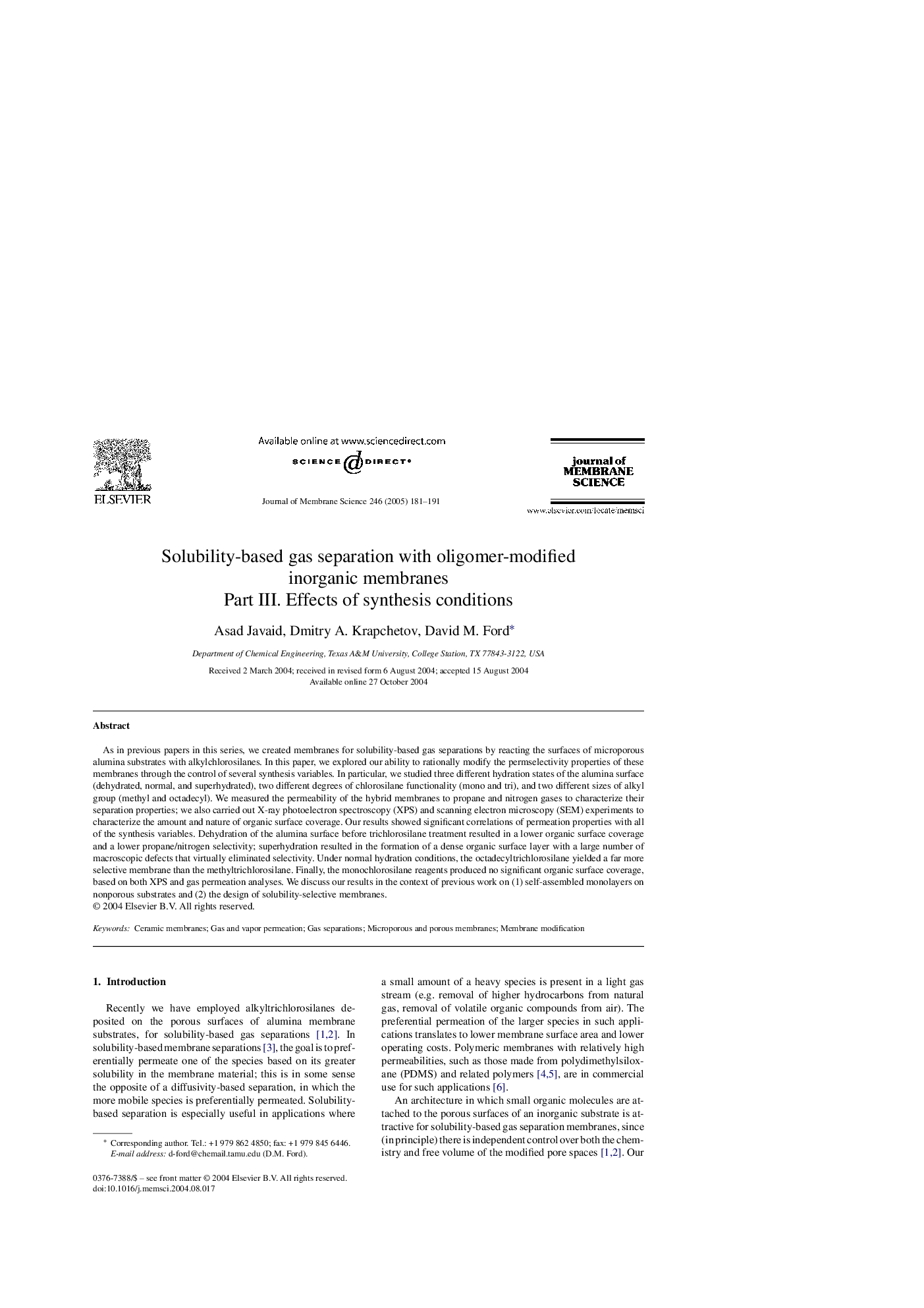| Article ID | Journal | Published Year | Pages | File Type |
|---|---|---|---|---|
| 10388947 | Journal of Membrane Science | 2005 | 11 Pages |
Abstract
As in previous papers in this series, we created membranes for solubility-based gas separations by reacting the surfaces of microporous alumina substrates with alkylchlorosilanes. In this paper, we explored our ability to rationally modify the permselectivity properties of these membranes through the control of several synthesis variables. In particular, we studied three different hydration states of the alumina surface (dehydrated, normal, and superhydrated), two different degrees of chlorosilane functionality (mono and tri), and two different sizes of alkyl group (methyl and octadecyl). We measured the permeability of the hybrid membranes to propane and nitrogen gases to characterize their separation properties; we also carried out X-ray photoelectron spectroscopy (XPS) and scanning electron microscopy (SEM) experiments to characterize the amount and nature of organic surface coverage. Our results showed significant correlations of permeation properties with all of the synthesis variables. Dehydration of the alumina surface before trichlorosilane treatment resulted in a lower organic surface coverage and a lower propane/nitrogen selectivity; superhydration resulted in the formation of a dense organic surface layer with a large number of macroscopic defects that virtually eliminated selectivity. Under normal hydration conditions, the octadecyltrichlorosilane yielded a far more selective membrane than the methyltrichlorosilane. Finally, the monochlorosilane reagents produced no significant organic surface coverage, based on both XPS and gas permeation analyses. We discuss our results in the context of previous work on (1) self-assembled monolayers on nonporous substrates and (2) the design of solubility-selective membranes.
Keywords
Related Topics
Physical Sciences and Engineering
Chemical Engineering
Filtration and Separation
Authors
Asad Javaid, Dmitry A. Krapchetov, David M. Ford,
